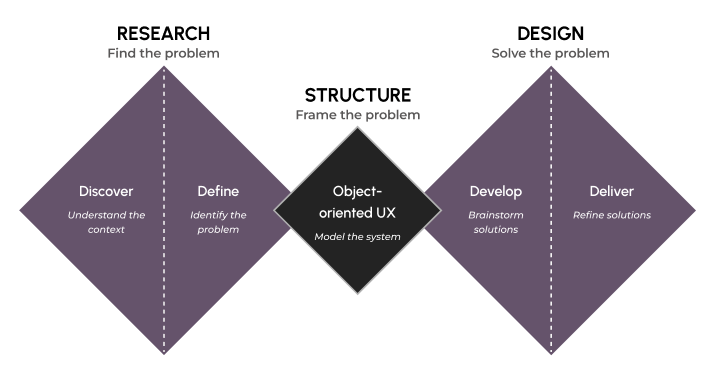From 12 months to 3: How strategic UX content design for recurring schedules generated $12,500 monthly revenue while saving development time
By Tiffany Hsia
Content design
By Tiffany Hsia
Content design
UX/UI Design, Content Strategy, Object-Oriented UX (OOUX), Automotive, Appointment Scheduling, SaaS Enterprise Tools, Modular System, Product Research, Competitive Analysis
Service managers at automotive dealerships experience inefficiencies with managing their team’s work schedules in their Dealership Management System (DMS). The process is time-consuming and costly for the dealership:
*Shop capacity is the maximum potential workload the dealership can handle. Shop loading is the actual assigned workload at the dealership in a given timeframe. Revenue is maximized when shop capacity and shop load is balanced because the dealership is managing vehicle work efficiently.
Recurring schedules were a critical need for auto service departments, but UpdatePromise’s scheduling tool lacked this capability. Limited scheduling features created avoidable inefficiencies, added administrative burden, and increased staffing costs.
Lack of recurring scheduling features
UpdatePromise’s scheduling tool integrates with several major Dealer Management Systems (DMS), but doesn’t support recurring shifts and holidays.
Rotating shifts are common in the industry
Most dealerships use rotating team schedules to extend service hours by 50% without increasing headcount (WardsAuto, 2019). Without recurring scheduling, managing can become tedious and error-prone.
Manual scheduling reduces efficiency
Service managers often spend hours manually adjusting schedules, which pulls them away from higher-value tasks like overseeing technicians or supporting customers.
Staffing costs continue to rise
Some dealerships hire dedicated staff just to manage work schedules. With 50% turnover each year and $15,000 per new hire, these staffing costs add up fast (Hireology, 2023).
As the content designer for this project, I focused on creating a solution that could be implemented quickly and scale with dealership needs. I did the following:
How can we create a roster management system that supports 99% of dealership scheduling scenarios while minimizing developer effort?"
I received a Slack message from the Lead Front-End Developer asking if there was a design for a Jira ticket that she received. It contained a screenshot of Outlook’s recurring schedules functionality and the request that it be built into UpdatePromise’s scheduling tool ASAP.

UpdatePromise’s scheduling tool was currently limited to creation of single or consecutive day shifts, and the ability to assign Service Advisors to those shifts.
I applied the Triple Diamond Framework, with Object-Oriented UX bridging research and design, to create a solution focused on the problem space.
The Triple Diamond Framework

Lorem ipsum dolor sit amet, consectetur adipiscing elit. Suspendisse varius enim in eros elementum tristique. Duis cursus, mi quis viverra ornare, eros dolor interdum nulla, ut commodo diam libero vitae erat. Aenean faucibus nibh et justo cursus id rutrum lorem imperdiet. Nunc ut sem vitae risus tristique posuere.
During the research and structure process, I uncovered several key insights that shaped my content strategy decisions:
Interested in seeing the research and structure process and some bonus workflow diagrams? Check out my full-length UX case study—otherwise, continue reading!
I created a comprehensive content framework for the recurring schedules feature that would be intuitive for dealership users while meeting technical requirements:
These deliverables significantly reduced development complexity by focusing only on essential scheduling features while maintaining a consistent user experience throughout the system.
To ensure clarity and consistency across the project, I created a terminology guide that:
I created detailed attribute tables for each scheduling event type. These tables served as content specifications that helped define the structure, language, and logic for each recurring scheduling feature.
Benefits of attributes tables
I crafted content for 6 high-fidelity prototypes in Figma that addressed common recurring scheduling scenarios. I based these prototypes on user stories to ensure the features supported real-world dealership workflows.


Rather than mixing shifts and holidays, I designed a separate "Holidays" tab to reduce cognitive load. Holidays were meant to be infrequent, set-and-forget events, unlike shifts, which required regular updates.

I simplified the Shifts UI by prioritizing only the most relevant repeat options—Daily, Weekly, and Monthly—and reserving Yearly repeats for Holidays. I introduced a new “Repeats” checkbox to show and hide the repeat options for a more lightweight experience.

I simplified recurrence setup while still offering flexible configurations by limiting weekly repeats to only 4 weeks, since my research showed that 1–3 week rotations were most common in dealerships.

I kept the default Start and End Dates (current day and one year out) for Weekly and Monthly shifts. This matched the behavior for Daily shifts, reducing cognitive load and keeping recurrence logic consistent across the system.

I added a "No End Date" checkbox, which allowed shifts to repeat continuously until changed or deleted. This reduced how often service managers needed to manually update shifts.

As I developed the prototypes, I identified an edge case where service managers might try to schedule a weekly or monthly recurring shift that has no occurrences. I crafted a clear, actionable error message to help service managers quickly understand and resolve this issue.
By focusing on essential scheduling features informed by dealership workflows and user research, I created a targeted design solution that the development team implemented in just three months instead of the initially estimated year. This strategic approach directly contributed to measurable business outcomes for UpdatePromise.
Citations
Muller, D. (2019, September 10). Do dealerships have too many tools in the toolshed? Automotive News. https://www.autonews.com/retail-technology/do-dealerships-have-too-many-tools-toolshed/
Skrobot, D. (2000, July 7). A TO Z OF SUCCESSFUL FIXED OPERATIONS. https://www.wardsauto.com/fixed-operations/a-to-z-of-successful-fixed-operations
Hireology (2023, December 4). Understanding the costs of a bad hire at dealerships. https://hireology.com/blog/understanding-the-costs-of-a-bad-hire-at-dealerships/